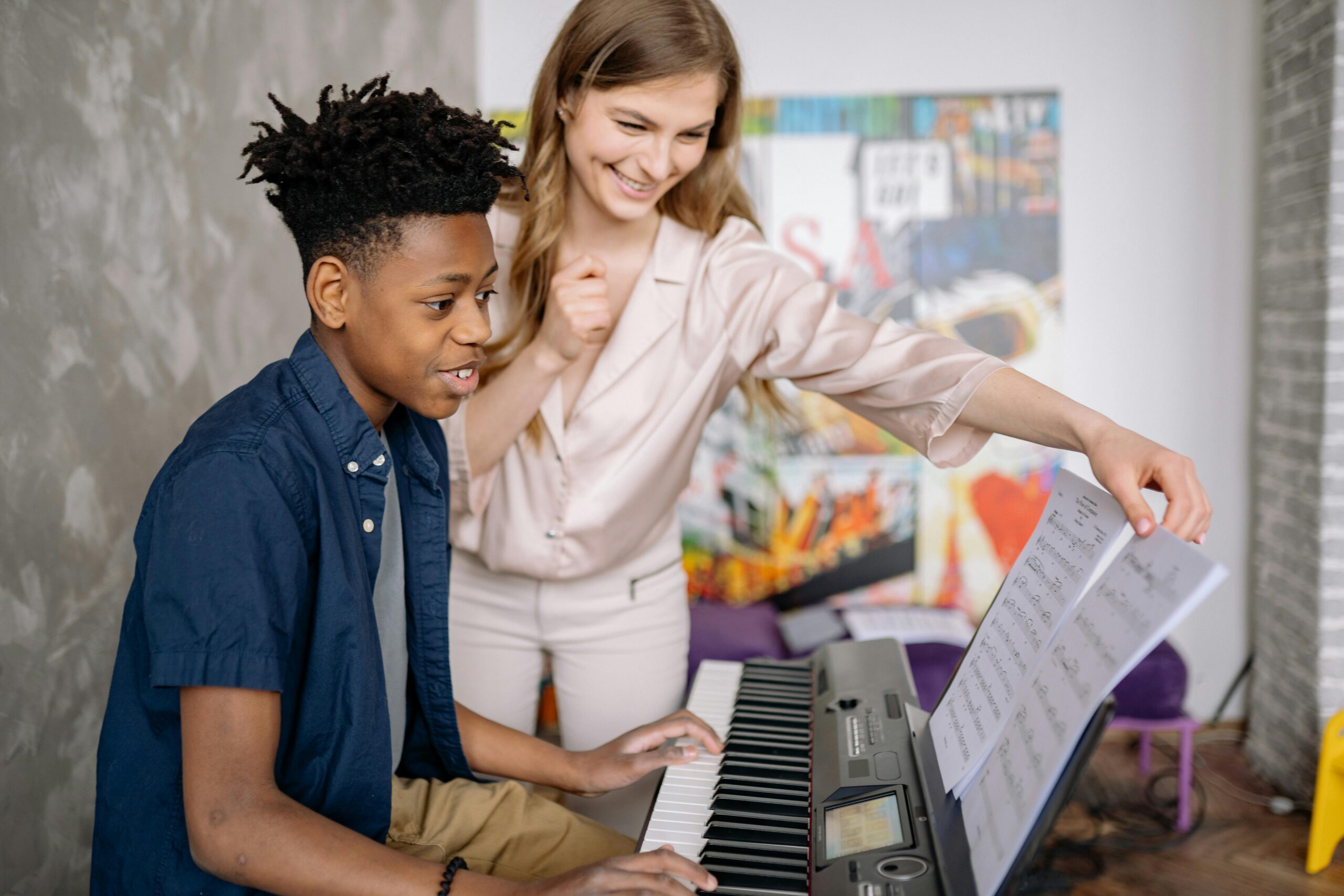
The Pros & Cons of E-Learning to Build Social & Emotional Learning Skills
For many years now, researchers in educational fields have been trying to understand the influence of technology in the classroom. Is it helping? Is it hurting? Should we be using it? Of course, all of the answers to these questions may not be moot. After all, technology isn’t IN the classroom today, technology IS the classroom.
Just a couple of weeks ago I had the opportunity to sit in on a virtual SEL session with a friend of mine, Patrick Erwin, who is a high school teacher here in the Atlanta area. Despite his efforts trying to make the lesson innovative and experiential, it was evident that he was struggling to keep his students engaged. “It’s so much harder [especially] with the younger kids to engage online,” he told me when we talked after class.
Unfortunately, Patrick isn’t alone.
E-learning is especially challenging when the subject you’re trying to teach is Social and Emotional Learning. After all, the reason we focus so hard to build social and emotional skills in today’s students is often because of the negative effects of technology. Kids who interact mostly on a screen often struggle when it comes time for face-to-face interaction.
Research from current models of online learning support this theory and have found that students underperform in the virtual classroom. One research initiative found that “students taking [a] course in-person earned roughly a B- grade (2.8) on average while if they had taken it online, they would have earned a C (2.4).” The same report also found that after taking an online course, students are about 9 percentage points less likely to remain enrolled in the semester.
The Pros and Cons of E-Learning for SEL

All challenges considered, it just wouldn’t be true to assume that because online education has underperformed in the past necessarily means that it will do so again in the future. Let’s examine some pros and cons of online education and then talk through a few ideas to improve SEL instruction in the virtual classroom.
How E-Learning Might be Helping
1. Students learn at their own pace.
Perhaps the most beneficial side to e-learning is that students can learn at their own pace. In in-person classrooms, the pace of learning (whether too fast or too slow) is often a root cause for behavioral issues (in bored students) or overwhelmed students (in slower learners). E-learning offers the opportunity for each student to move at their own pace without knowing the progress of the rest of the classroom.
2. Material can be adapted to meet the needs of different students.
Another great benefit of e-learning is that different students often learn best from different teaching styles and content. A teacher can offer the same lesson in multiple formats and students can respond to the method that suits them best. While this can certainly be a lot of work on the front end, perhaps this year will present us with an opportunity to develop an initial virtual version of our content which teachers can add to in future years.
3. E-learning is more cost-effective.
Virtual learning is far more cost-effective than its in-person counterpart. Online learning presents schools with an opportunity to cut costs, especially if the student-teacher ratio can be increased without a loss of personal connection.
4. The future of online learning is bright.
Technology’s greatest benefit is that it is innovative. It’s always progressing and improving. One researcher put it this way: “Advances in AI offer hope that future online courses can respond to the needs of students, meeting them where they are in their learning and engaging them in higher education even better than in-person courses are currently able to do.”
How E-Learning Might be Harming
1. Online learning isn’t performing well… yet.
As we discussed earlier, the track record for online learning hasn’t yet caught up with our needs. According to one educator, “Online students did substantially worse than students in the same face-to-face course: They earned lower grades, were less likely to succeed in subsequent courses, and more likely to drop out.”
2. Underprepared students are vulnerable.
Perhaps the greatest negative in the e-learning column is that it is disproportionately effective on students of high socioeconomic status. Reports on the effectiveness of online education have found that the results of e-learning are questionable among some students. “While online courses may have the potential to differentiate coursework to meet the needs of students with weaker incoming skills, current online courses, in fact, do an even worse job of meeting the needs of these students than do traditional in-person courses.” Even though online learning offers access to everyone, the benefits of it are not yet available to everyone.
3. Distraction is the greatest drawback of technology.
A 2018 article in Psychology Today presented an interesting finding: A new study revealed that students who used technology in class did worse on their midterm and final exams than students who didn’t use technology in class. The study also found that students were negatively affected by the presence of their cell phones in the classroom even if they never looked at it.
4. Students suffer from “Zoom fatigue.”
For students, virtual classrooms create the illusion that you are being watched at all times, which can create fatigue, stress, and anxiety. Although some technology is working to change this norm, it is unlikely that having 20 squares of people all staring at you on a regular basis is likely to change anytime soon.
Ideas for Improving SEL in the Virtual Classroom
Though there are positives and negatives to e-learning, the reality is that the virtual classroom is here to stay. So how do we make the most of the positives and minimize the negative effects?
1. Where you can, provide opportunities for students to learn at their own pace.
Years ago, I heard my friend Julie Diaz, former principal of Travis High School, say that “the one doing the talking is the one doing the learning.” I think this is true. If we want to create a successful e-learning experience for our students, the progress and pace will have to be determined by them.
How could you create opportunities to allow your students to move at their own pace through the material?
2. Utilize screen time to inspire in-person engagement — even at a later time.
Especially when we are teaching social and emotional skills, our screen-to-screen time should be used to inspire experiences and activities in our face-to-face time. The next time you teach a social or emotional concept, make sure that your students have a clear experience or activity to utilize in their interactions with family and friends. The best e-learning encourages real-world action.
How could you encourage your virtual students to engage in the real world?
3. Offer flexible time, where you get more one-on-one time with students who need it.
Many teachers are already doing this, but we may have to be more intentional with it. Knowing that many of your low socioeconomic status (SES) students may be lagging behind in the virtual classroom means that the most successful teachers will be those who actively reach out to students who they suspect might be struggling and engage them in one-on-one learning where possible. While this may seem daunting, lower the intensity of it by considering just one student at a time. Andy Stanley once said, “Do for one what you wish you could do for everyone.”
Which of your students need extra help from you this week?
4. Utilize AI and apps to leverage the best of what e-learning has to offer.
The greatest benefit that e-learning has is the progress that is being made each month in both artificial intelligence and technology. While the COVID-19 pandemic has set us back as a country, it has also garnered a boom in education technology. There are more exciting advances in educational technology happening now than perhaps at any time in the past. Here are just three helpful apps that you might be able to use in your classroom:
- NearPod – This interactive app allows students to move at their own pace while the teacher monitors.
- Socrative Student – This virtual tool is modeled after the Socratic Method. Teachers and students engage in conversations driven by great questions.
- Flipgrid – This app from Microsoft utilizes the most engaging tool teachers have: video. Teachers make videos that are sent to students and then students respond back with videos of their own.
Which of these apps might you be able to use in your classroom?
Just last week Patrick texted me again about his class. He’s continued with his SEL lessons (using our Habitudes curriculum). Despite the challenge of teaching online, there seems to be a light at the end of the tunnel. “I was not prepared for the depth of discussion we just had,” he told me. “It was amazing, inspiring, and helpful. The kids ATE IT UP!”
Sometimes, all our virtual lessons need is a little patience and a lot of commitment to give them a push in the right direction.
Interested in using Habitudes for Social and Emotional Learning in your classroom? Check it out here.






